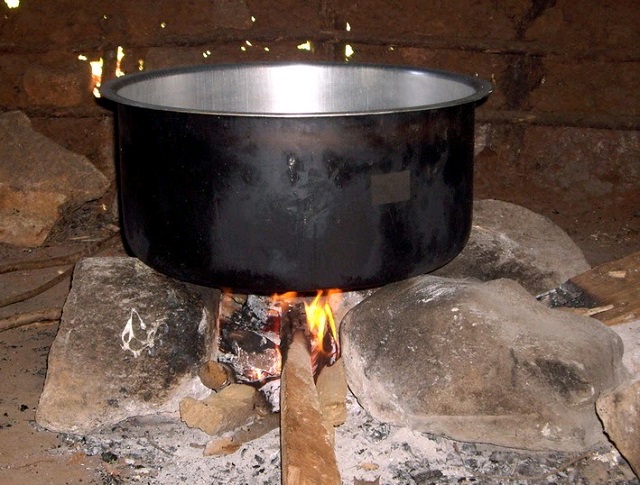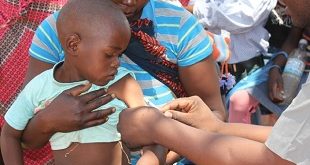
The kerosene and charcoal used for cooking in much of Sub-Saharan Africa limits the continent’s ability to meet its climate goals and damages the health of millions of women and children
COMMENT | BRIAN MALIKA | As the world races to meet the goal of net-zero carbon emissions, most regions are focusing on the energy sector. But in Sub-Saharan Africa, cooking fuel poses a bigger challenge. If Africa is to achieve its emissions-reduction goals, Africans must find a clean, affordable way to prepare food.
More than 80% of people in Sub-Saharan Africa use charcoal, kerosene, or firewood to cook. These fuels produce black carbon, one of the biggest contributors to climate change after carbon dioxide. And they do more than harm the planet. The household pollution caused by traditional cooking fuels contributes to more than 500,000 premature deaths annually in the region. It also leads to stunted growth and increased risk of respiratory infections in children under five.
And, with Sub-Saharan Africa’s population growing 2.7% annually, the problems associated with cooking fuel will worsen until a safer, cleaner option is found. Several new fuels have been proposed, from bioethanol to electricity produced from solar panels. But to determine the best alternative, those who use the fuel must be part of the discussion. People will not use a greener cooking fuel unless it is affordable and easy to access. So-called design thinking is one way to include their views. This approach, used successfully in many developing-country contexts, relies on collaboration between project managers, engineers, and local communities to find the right solution for a particular problem. In Brazil, the World Wide Fund for Nature (WWF) used design thinking to create jobs in remote villages that are on the front line in the fight against climate change and biodiversity loss. WWF team members engaged local leaders to determine how residents could be employed to conserve endangered forests through the use of traditional resource-management techniques. Likewise, the United Nations Food and Agriculture Organization coordinated with indigenous peoples on a white paper that describes how traditional production methods offer a platform for sustainable food systems.
Leaders in Sub-Saharan Africa can draw on these cases to engage communities in the search for cleaner sources of cooking fuel. Some experiments already are taking place. A youth group in Kibera, Africa’s largest slum, recycles biodegradable food waste to make a form of cooking fuel that produces no carbon-dioxide emissions. But residents noted that the biogas production produces a foul smell during the fermentation process – a serious problem in this heavily populated area. The residents suggested putting natural odor eliminators like vinegar around fermentation areas. The Africa Biogas Partnership Program shows how a good idea could be made better through design thinking. This program offered rural household’s biodigesters to turn waste into cooking fuel. While the program successfully reduced fuel consumption and cases of respiratory illness, many farmers who relied on financing to buy the biodigesters could not repay the loans on time.
The biodigesters improved the quality of life for the farmers and their families, but they did not contribute to additional income. The inclusion of farmers in the program’s development might have identified this problem in advance and prompted development agencies to create a grant program to offset the upfront expense. Affordable, green cooking fuel will benefit Sub-Saharan Africa in another way: its production can provide jobs for the millions of young Africans about to enter the workforce. The number of Africans under 24 is projected to increase by nearly 50% by 2050. Every year for the next decade, up to 10-12 million young Africans will enter a labor market that currently can accommodate only 3.1 million of them. The number of people employed globally in the renewable-energy sector has grown steadily in the past decade. The industry offers opportunities for both skilled and unskilled labor and has a better gender balance than traditional energy production. But, while 12 million people were employed in green energy production in 2020, only 2.5% of them live in Sub-Saharan Africa.
By 2050, Africa’s population is expected to double – totaling a quarter of the world’s population. Cities will account for more than 80% of the increase – and most of these people will inhabit crowded slums. With the right initiatives, green energy can be a source of hope for the urban poor. In rural parts of Africa, solar panel installation is creating new jobs. In urban settings, investment in industries like biogas production can reduce carbon emissions and increase employment opportunities. African leaders and their international partners must engage local communities to identify, design, and implement the right solutions to the problem of widespread use of dangerous cooking fuels. The health of Africa’s people – and of the planet – requires nothing less.
****
Brian Malika is a social worker, reproductive-health counsellor, and Founder of One More Percent, a nonprofit organization that works to improve the health of young women and girls.
Copyright: Project Syndicate 2022.
 The Independent Uganda: You get the Truth we Pay the Price
The Independent Uganda: You get the Truth we Pay the Price





